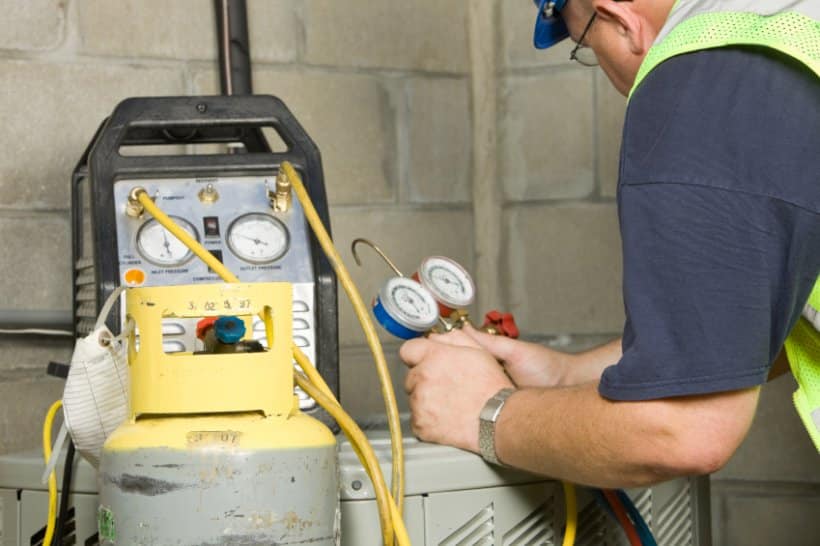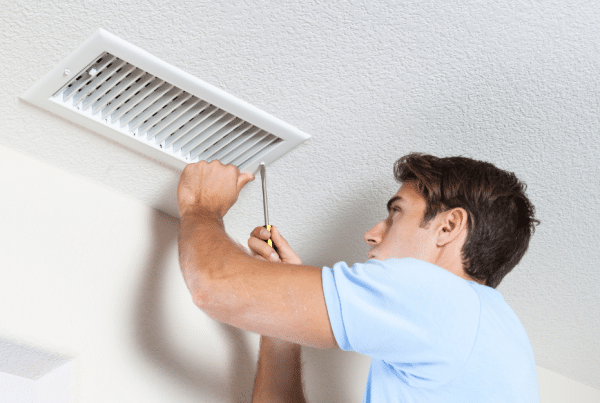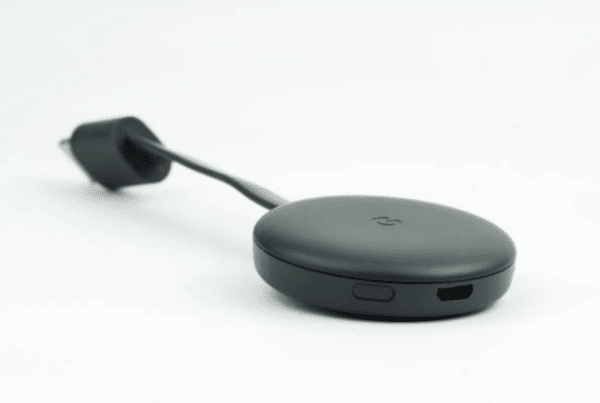In the heat of summer, nothing feels better than stepping into your cool and comfortable home. But what happens when your air conditioning (AC) system starts to malfunction? One common culprit could be a faulty AC high-pressure switch.
This little component plays a crucial role in maintaining the efficiency of your AC unit, and knowing how to test it can save you time and money on costly repairs. In fact, most local HVAC services, like the most reliable HVAC maintenance plan in Fort Mohave, AZ, include evaluating the proper functionality of the AC high-pressure switch.
In this blog post, we’ll break down the importance of the high-pressure switch and guide you through five simple steps to easily diagnose any potential issues.
Understanding The Importance Of The AC High-Pressure Switch
The AC high-pressure switch plays a crucial role in your air conditioning system, as it monitors the high-pressure side of the HVAC system and safeguards against potential damage to the compressor from over-pressurization.
It also serves as an important safety mechanism that prevents electrical shorts or malfunctioning components by cutting off power to the compressor if needed.
Definition And Function
The AC high-pressure switch, also known as the refrigerant pressure sensor or high-pressure cut-off switch, plays a crucial role in maintaining your home’s air conditioning system.
This small but powerful device is responsible for detecting the refrigerant pressure within the AC system and ensuring it stays within safe operating limits.
For example, imagine a scenario where you have guests over on a hot summer day, and everyone is relying on your air conditioning to keep cool inside.
Symptoms Of A Faulty AC High-Pressure Switch
If you’re experiencing problems with your air conditioning system, it’s important to know the signs of a faulty AC high-pressure switch. One of the most common symptoms is when your HVAC system stops blowing cold air altogether.
This can be due to a lack of refrigerant pressure caused by a malfunctioning switch.
You might also notice that the evaporator coil and condenser fan are not working properly, causing your cooling system to overheat and shut down. These issues can cause significant damage to your AC system if left unchecked, so it’s important to have them addressed as soon as possible by an experienced HVAC technician who knows how to test the high-pressure switch using multimeter testing or other techniques.
5 Simple Steps To Test The AC High-Pressure Switch
Testing the AC high-pressure switch is a straightforward process that can save you time and money. Follow these five easy steps to ensure your air conditioning system is in top shape and avoid costly repairs down the line.
Step 1: Ensure Safety Precautions
Before you start testing the AC high-pressure switch, it is essential to ensure your safety. Turn off the engine and disconnect the battery cables to prevent electrical shock.
Wear gloves and safety goggles when handling refrigerant, as it can cause irritation or damage to your skin or eyes. Be mindful of any moving parts in the cooling system, such as the compressor clutch and condenser fan, which may injure you if they come into contact with your hands.
Additionally, make sure that your work area is properly ventilated to avoid inhaling harmful fumes from refrigerants. You should also have a fire extinguisher nearby in case of an accident because electrical circuits may cause fires if not handled correctly.
Step 2: Locate The High-Pressure Switch
The second step in testing your AC high-pressure switch is locating it. The high-pressure switch is usually located on the back of the compressor or in the refrigerant line near the compressor.
Look for a connector that has wires and leads to the switch.
If you’re having trouble finding it, refer to your car’s manual or search online for diagrams specific to your model.
Once you’ve located it, make sure that there is no electrical current flowing through it before proceeding with testing. Disconnect any wiring connected to the switch and remove it carefully from its position using wrenches or pliers as necessary.
Locating and disconnecting the high-pressure switch can be tricky, so if you’re unsure about anything, consider hiring an experienced HVAC technician to assist you with this process for optimal safety and accuracy.
Step 3: Test The Switch With A Multimeter
To test the AC high-pressure switch, you will need a multimeter. This tool measures electrical circuits, making it perfect for testing whether your high-pressure switch is open or closed.
Next, locate the high-pressure switch in your air conditioning system – this can be found on the compressor or accumulator. Remove its electrical connector before testing it with your multimeter by placing one probe on each of its two terminals.
If there is no reading or an infinite resistance reading, then the circuit is open and, therefore, faulty.
Remember always to exercise caution when handling electrical circuits and take necessary safety precautions to avoid electrocution.
Step 4: Replace Or Repair The Faulty Switch
After testing the AC high-pressure switch with a multimeter and identifying that it is faulty, the next step is replacing or repairing it.
If the switch needs to be replaced, the technician will first need to locate an exact replacement part for your specific air conditioning system. Once they have found the correct part, they will remove and replace the old switch with the new one.
Regardless of whether or not you choose to repair or replace your AC high-pressure switch, ensuring its proper functioning is crucial for maintaining optimal performance in your cooling system.
Conclusion
Maintaining a properly functioning air conditioning system is essential for staying comfortable during hot weather. Testing the AC high-pressure switch may seem daunting, but identifying any faulty parts before they cause bigger problems can save you time and money.
By following these 5 simple steps to test the switch with a multimeter, you can determine if the electrical circuit is closed or open and whether there are any issues with your HVAC system’s cooling ability.
If necessary, replacing or repairing the faulty switch will ensure that your compressor and condenser fan operates correctly, preventing damage to your AC system in the long run.
Remember always to prioritize safety precautions when handling electricity and refrigerants.








